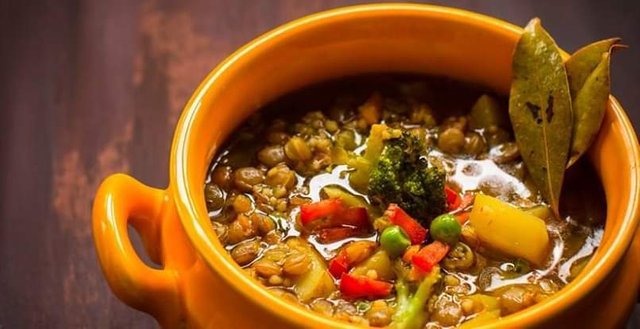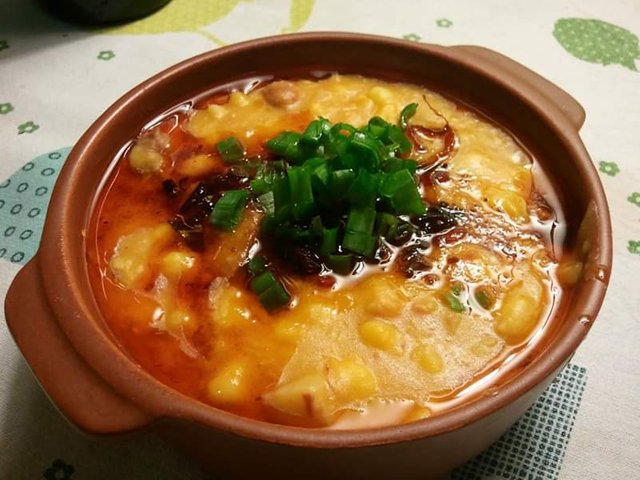Locro recipe For 8/10 people approx. Ingredients ½ kilo of white corn crushed ½ kilo of beans "butter" 1 kilo of meat (skirt, palette, baby turtle, etc. at your choice) 1 kilo of yellow squash Fried fat Vacuum oil or fat 2/3 large onions 1 green onion Salt Ground chilli Peppers Preparation The night before cooking, they are soaked with plenty of water and separated corn and beans separately. In the morning both ingredients will have increased their volume and will have "consumed" a lot of water. This improves the taste of the vegetables and accelerates the cooking process, not spending so much gas on cooking. First the corn already soaked for 30/40 minutes is cooked in abundant water. Then the bean is added for the same amount of time. Along with the bean, you can now add the meat cut into large pieces to start cooking and then cut into cubes. Finally, the squash is added. For cooking there are two options: one is to peel the squash while it is raw, cut it into cubes and add it to the pot; the other is to boil the pumpkin with a cut shell into large pieces, to be able to easily remove it once the squash is cooked (we lean towards this last option because it is easier ... remember that the squash peel is very hard to peel while raw).With the cooking of the bean in 30/40 minutes, the meat and the squash will also be cooked. Once cooked the meat in large pieces, remove it to cut into cubes and return to throw them into the pot. At the same time, the squash will already be cooked and discarded, so the water will start to turn yellowish / orange. At this time 2/3 tablespoons of coarse salt can be added. The cooking will be on a moderate heat, stirring every 10 minutes. Everything will be ready to eat when the corn and beans are tender. The total time of cooking and gas consumption will not be May at 2 o'clock. Preparation of the fried fat The fried fat is the fundamental "seasoning" of the catamarca locro. Traditionally it is made with bovine fat but for convenience it can be supplanted with a little oil (mixture, sunflower, olive, etc.). In a pan you should sauté the common onions cut very small, with fat or oil. Once golden, you should turn off the heat and season with a little salt, ground chili (spicy or not spicy) and paprika. Add raw green onion (do not cook on the fire, but mix it with the other onion already cooked and hot). Tips (or secrets of our grandparents ...) The locro is a pot food that is improved and "concentrated" with the passing of the hours, so the leftovers will be more tasty the next day. Do not leave in the pot what is left over. You have to let it cool in another container that is not made of steel or aluminum, so that it does not "ferment" and "recollect". On successive days, it is recommended to reheat in a slow cooker and not in a microwave. In addition to fried fat, pieces of buttery cheese can be added to the locro dish, which will melt with the heat of the food and / or scratched cheese on top.This recipe from Locro is the typical one that is cooked in Argentina. You will find differences in the ingredients with respect to the locros that are made in Buenos Aires, with some elements that are not native to the food that we inherited from our brothers the Indians of the north. For this reason, the additions of red pepper, bell pepper, large intestine, tail, red chorizo, chickpeas, etc. They are a Spanish heritage that has to do with our original food of the original peoples. In fact, locro is a rich but "poor" food, economical in its ingredients. Traditionally, there was the "guascha" locro or the "poor" locro (in Quechua), which was made only with boiled corn and a piece of bone to flavor the water. The incorporation of the meat, the bean and, above all, the squash "enriched" the food and became the 4 basic and fundamental elements of this delicious regional dish.


Posted using Partiko Android
I love you😍
Posted using Partiko Android
Downvoting a post can decrease pending rewards and make it less visible. Common reasons:
Submit